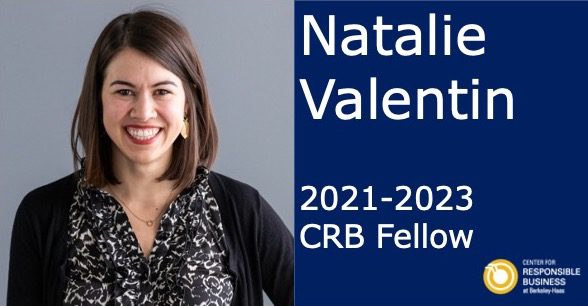COVID-19 Pandemic: Nordic vs. U.S. Approaches

Nearly two months after COVID-19 was named a “pandemic” by the World Health Organization, we feel the immense ripple effect through our communities, healthcare systems and economies. On May 11th, the Berkeley Conversations: COVID-19 series hosted a virtual conversation about the Nordic vs. U.S. response to the pandemic. The talk was convened by the Center for Responsible Business, the UC Berkeley Department of Scandinavian, the Institute of European Studies, and the Peder Sather Center. During the Campus Conversation, host Laura Tyson along with speakers Robert Strand, the Executive Director of the UC Berkeley Haas Center for Responsible Business, and Ann Keller, Associate Professor of Health Politics and Policy at the UC Berkeley School of Public Health, dove into comparing and contrasting Nordic and U.S. health, economic, and public policy responses to the pandemic.
Different baselines
When we think about how countries respond to a pandemic, we must think about their baseline—where did they start? With COVID-19 in particular, countries and healthcare providers have very few tools to intervene and we’re all working to figure it out as we go. Ann pointed out that “when we look at the Nordics, they’re doing things that look different from what happens in the United States and there’s [an implicit] comparison there” but “these countries aren’t starting from the same place,” especially when it comes to access to human services and healthcare.
The U.S. spends a significantly larger portion of its GDP on healthcare than Nordic countries do, while maintaining a much lower life expectancy rate. The U.S. also has much higher obesity rates, chronic disease burden and hospitalization rates from preventable diseases. As the number of COVID-19 cases rose, the healthcare system in the U.S. and the general population was already burdened with more pre-existing conditions, which as we now know contribute to a higher fatality rate.1
The U.S. and the Nordics—which includes Sweden, Denmark, Norway, Finland and Iceland—are all capitalist countries. While the Nordics are often pegged for being “small and homogeneous” compared to the U.S., it’s important to consider the history of the Nordics in constructing varieties of capitalism over time. The Nordics have successfully created systems that allow services, including childcare, healthcare and education, to exist outside of markets, which guarantees its citizens safety and security, regardless of employment. The Nordics are, in Robert Strand’s words, “obsessed with efficiency.” These systems aren’t about the rich paying for the poor, but instead about the Nordics’ middle class paying for itself.
The Nordic vs. U.S. Response
So how do these political and capitalistic differences influence a pandemic response? As Robert highlighted, trust in institutions and government, trust in employers and trust in each other play a fundamental role. When we have a crisis that comes on so rapidly and intensely, which demands strong collaboration and coordination, consensus and trust help us find better solutions. The Nordic countries were able to react swiftly to COVID-19, making tweaks to systems already in place for citizens who have trust in those systems. For example, Denmark discouraged mass layoffs by paying employers up to 90% of the salaries of workers who can’t work during the shutdown. This response was deemed “the most radical in the world,” but as far as Nordic policies goes, it directly reflects the strong relationship between employers and employees, and employers and the government. Denmark prioritized keeping this relationship intact, understanding that it fuels its economy, and that serving that trust would be detrimental to its future.
Sweden, on the other hand, never hit the pause button on its economy and has opted to allow transmission to happen among the healthy and young portion of the population. While encouraging elderly and those in higher risk groups to self-isolate, Sweden is working to achieve herd immunity. It’s an unorthodox approach that only works given Sweden’s strong social safety net and healthier-than-average population.
Lessons Learned
So what can we learn from these nuances in responses between the Nordics and the U.S.? First of all, there isn’t a “winning” response as human lives are lost. In nearly every country’s response, there have been pitfalls. Yet there are a few key lessons from the Nordics that we might be able to apply to our response to COVID-19 and beyond:
1. Response speed is critical. Because of the digitized relationship between Nordic governments and employers, money was shared quickly and jobs were protected. The U.S. approach to giving small business loans has been painful for many small businesses in the trenches, contributing to our growing unemployment rate as they’re forced to shutter.
2. Smart policy. It’s critical to focus on ‘smart policy’ during a Pandemic and beyond. In the U.S., we often debate “small government” vs. “big government,” when we should really be talking about how to make our programs more efficient and effective. Efficient policy is the very essence of Nordic democracy.
3. Culture of consensus. Right now, more than ever, we’re experiencing shared vulnerability. In the U.S., that has continued to polarize the nation, leaving us with a “my team vs. your team” mindset. In the Nordics, people naturally think about “what’s best for the common good.” Regardless of where you sit on the political spectrum, consensus and unity is crucial through a crisis.
4. There’s no playbook here. Countries are doing the best they can with what they have. There are good ideas emerging everywhere, such as holding elementary school classes outside, where risk of contracting COVID-19 is decreased. Contact tracing, such as the solution South Korea is spearheading, is an approach that has been proven to work. What else can we learn from each other to apply more broadly?
Sadly, there is no country that can hide from COVID-19 and the economic crisis that ensues. But we can all play a role in mitigating the risk of the most vulnerable in our communities in the short-term. And over time, it seems the U.S. has some work to do to simply improve our baseline—our healthcare outcomes, our smart policy and our approach to working together as a nation.
We should ask ourselves: what is the society we’re trying to create? We can draw inspiration from the Nordic experience, where people are free and not constrained by the fear of health insurance being coupled with employment. We need a new approach to taking care of U.S. citizens and now is the time to rethink the entire system.
About the Author

Sarah Hilmer is an evening and weekend MBA student at UC Berkeley Haas and a student advisory board member for UC Berkeley Haas Center for Responsible Business. She works as a PR Communications Manager at Intuit, where she’s focused on social responsibility and culture. Sarah spends most of her free time with her three-year-old daughter and husband, running Bay area trails and RV camping.


